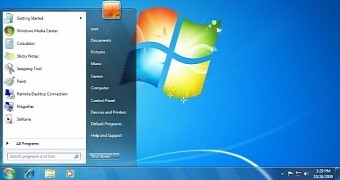Windows 7 was discontinued in January this year, and this means that computers still running this operating system are no longer provided with new security patches and updates.
So theoretically, not getting any updates means all the vulnerabilities that are discovered in the operating system are left without a fix, and this obviously means an increased likelihood of issues going forward.
The only way to receive security updates right now is to pay for them, as Microsoft has launched the Extended Security Update (ESU) program to allow companies that need more time to upgrade their fleets to keep all devices secure until the migration is complete.
As per Microsoft’s policy, the price of custom security patches is increasing every year, and now Windows 7 is getting ready to enter the second year of extended security updates.
“If your organization has been unable to update devices running the versions of Windows listed above to a currently supported version before January 12, 2021, ESU can provide security updates to those devices through January 11, 2022—helping protect those devices while you complete your Windows and Windows Server upgrade projects,” Microsoft explains in an advisory.
“Many organizations have made the transition to the latest version of Windows 10 or Windows Server. Those who deployed Windows 10 benefit from strong protection against threats plus the latest security and manageability features such as Microsoft Defender Antivirus, richer device management policies, and Windows Autopilot. Other organizations running legacy applications shifted their Windows 7 devices to Windows Virtual Desktop, which includes ESU for Windows 7 virtual desktops at no additional cost, enabling you to continue running critical line-of-business apps while you continue your migration to Windows 10. As a last resort, however, a number of organizations purchased, installed, and activated their first year of ESU to receive security updates for eligible devices through January 12, 2021.”
In theory, extended security updates are specifically supposed to give companies more time to move to a supported Windows version, so since January, some of those who were still running Windows 7 are supposed to have completed the switch to Windows 8.1 or Windows 10.
If they haven’t, then the recommended step is to purchase one extra year of security updates as part of the ESU program for the computers that are still running Windows 7.
Very important to know is that you can’t just purchase the second-year of Windows 7 security updates if you weren’t already paying for the first year. What this means is that when reaching out to Microsoft to become part of the program, if you’re not already subscribed to the ESU, you need to pay for both the first and the second years of updates.
“Because ESU are available as separate SKUs for each of the years in which they are offered (2020, 2021, and 2022)—and because ESU can only be purchased in specific 12-month periods—you will need to purchase the second year of ESU coverage separately and activate a new key on each applicable device in order for your devices to continue receiving security updates in 2021. If your organization did not purchase the first year of ESU coverage, you will need to purchase both Year 1 and Year 2 ESU for your applicable Windows 7 or Windows Server devices before installing and activating the Year 2 MAK keys to receive updates,” Microsoft explains.
The policy applies not only to Windows 7 Service Pack 1 but also to Windows 7 Professional for Embedded Systems, Windows Server 2008 R2 SP1 and Windows Server 2008 SP2, Windows Server 2008 R2 SP1 for Embedded Systems and Windows Server 2008 SP2 for Embedded Systems.

 14 DAY TRIAL //
14 DAY TRIAL //